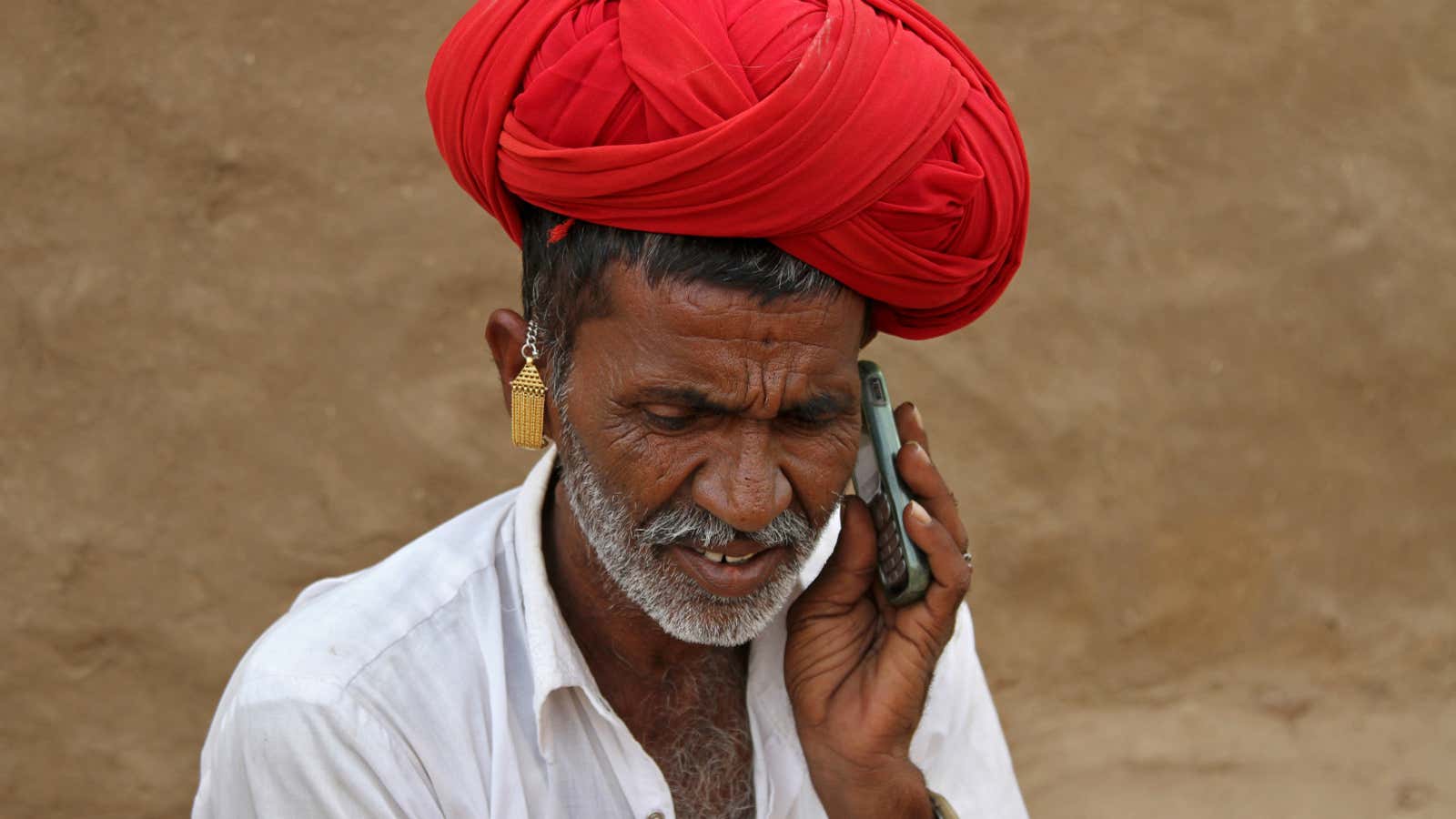Sanju Devi, a handicraft artist, is hooked on WhatsApp.
For over a year, this 40-year-old from Bhusara village in Bihar’s Muzaffarpur district has been using the messaging app to send images of her embroidered patches to clients in India and abroad.
“It’s convenient,” said Devi, who earlier used her son’s phone to market her products. Last year, Devi upgraded to a 2G connection for her Samsung smartphone after her children left the village to study elsewhere.
Devi, who spends between Rs300 and Rs1,000 a month on phone bills, is one of the 120 million rural internet users logging in through inexpensive devices. Using low-tariff data plans, these Indians are sharing images on social networks and downloading songs and videos like never before.
And their numbers are expected to surge.
By 2020, rural consumers will constitute about half of India’s internet users to reach 315 million, according to a report by the Boston Consulting Group (BCG), the US-based management and business consultancy. BCG studied 4,000 rural consumers in 27 villages across 14 Indian states to understand internet usage patterns.
Who is he?
In the hinterland, men utterly dominate internet usage. That’s in contrast to cities, where women, although still outnumbered, constitute a sizeable chunk.
What are they using the internet for?
While in cities, Facebook is all about staying in touch and making use of features such as photo and video sharing, in rural areas, it is often the only app on the phone. Therefore, it is the main gateway to news and videos.
Price-conscious rural consumers opt for efficient browsers such as the UC Web browser, so as to reduce data costs. Free apps, including SongsPK (for free music downloads) and WhatsApp, have a loyal following, too.
Rural India is increasingly consuming news through the internet via tailormade apps of vernacular media outlets. Dailyhunt, an app that provides news in over a dozen local languages, and the Hindi newspaper Dainik Jagran’s app are, therefore, more popular than those of English-language majors such as The Times of India.
How are they connected?
Most rural internet users use inexpensive handsets with 2G or 3G networks. Such cellphone models, coupled with economical data plans, have helped double rural internet penetration since 2014 to 87 million users in 2015.
Are they shopping online?
Online shopping is not very popular in villages, thanks to lower purchasing power and poor connectivity.
BCG estimates that between 2015 and 2016, online purchasing in rural India has doubled from 4% to 8%, driven by convenience and discounts.
However, almost 15% of rural consumers do use the internet to research or purchase a product, or even to register satisfaction or dissatisfaction with one.
